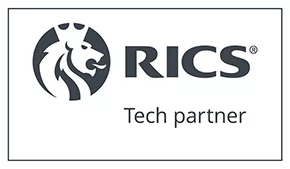Are unplanned outages throwing a spanner in your operations? If you’re nodding yes, then let’s dive into the world of preventative electrical maintenance—a strategy that any savvy Service Manager or Contract Manager should embrace to keep those unwanted disruptions at bay.
Understanding Preventative Electrical Maintenance
Preventative electrical maintenance is like that wise friend who warns you about the potholes on the road ahead. It’s all about tackling potential electrical mishaps before they turn into major issues. Compared to its reactive sibling, this method not only cuts down on downtime but also prolongs your equipment’s lifespan, bumps up safety, and slashes overall running costs.
Key Tactics for Effective Preventative Maintenance
Regular Inspections and Testing
Think of scheduled inspections as your first line of defense. These check-ups help sniff out early signs of trouble like wear, tear, and corrosion. Here’s what a thorough test lineup includes:
- Thermal Imaging: Spotting hotspots that signal potential electrical issues.
- Insulation Resistance Testing: Checking the health of wiring and insulation to avert possible failures.
Implementation of CMMS
A Computerised Maintenance Management System (CMMS) is your digital lieutenant in managing maintenance schedules, complying with safety norms, and keeping a tab on asset condition, significantly reducing potential downtime.
Adopting Predictive Maintenance Techniques
By harnessing data analytics and IoT sensors, predictive maintenance predicts equipment malfunctions before they disrupt your operations. This smart strategy ensures maintenance happens just when needed, optimizing resources and minimizing interruptions.
Training and Upskilling Maintenance Teams
An adept team is crucial. Equipping your technicians with cutting-edge knowledge and skills ensures swift and precise repairs, keeping downtime to a minimum.
Utilising CAFM and FSM Solutions
Integrate Computer-Aided Facility Management (CAFM) and Field Service Management (FSM) solutions to get real-time updates, schedule maintenance effectively, and ensure technicians are well-prepared, thereby enhancing operational efficiency.
Automation and AI
Embracing technology such as automation and AI can further streamline maintenance practices by scheduling routine checks, generating work orders, and even diagnosing issues automatically.
Challenges to Overcome
- Budget Constraints: Although initial costs are higher, the long-term savings from reduced downtime often outweigh these investments.
- Resistance to Change: Showcasing proven results through case studies can help in getting stakeholder approval.
- Data Management: Implementing robust CMMS or FSM systems can simplify the overwhelming task of managing maintenance data.
Stepping up your maintenance game with preventative strategies not only curbs downtime but also promotes a safer, more efficient operational environment. Isn’t it time to rethink your maintenance approach?
Frequently Asked Questions (FAQs)
- What is preventative electrical maintenance?
- It’s a proactive strategy focusing on addressing electrical system issues before they develop into serious problems.
- Why is thermal imaging used in inspections?
- It helps in detecting hotspots that could indicate underlying electrical faults.
- How does a CMMS aid in reducing downtime?
- It helps organize maintenance schedules and monitor asset health efficiently, preventing potential issues.
- What is the role of AI in preventative maintenance?
- AI can predict potential failures and suggest necessary preventative measures based on data analysis.
- Can regular training of technicians reduce maintenance downtime?
- Yes, equipping technicians with the latest skills and knowledge enables quicker and more effective problem-solving.
- What are the financial benefits of implementing preventative maintenance?
- It leads to significant cost savings by reducing unplanned outages and extending equipment lifespan.
- How does predictive maintenance work?
- It uses data from IoT sensors to forecast when equipment might fail and schedules maintenance accordingly.
- What challenges might organizations face when adopting these strategies?
- Initial high costs, resistance from staff, and managing large sets of data are common challenges.











